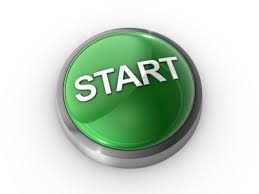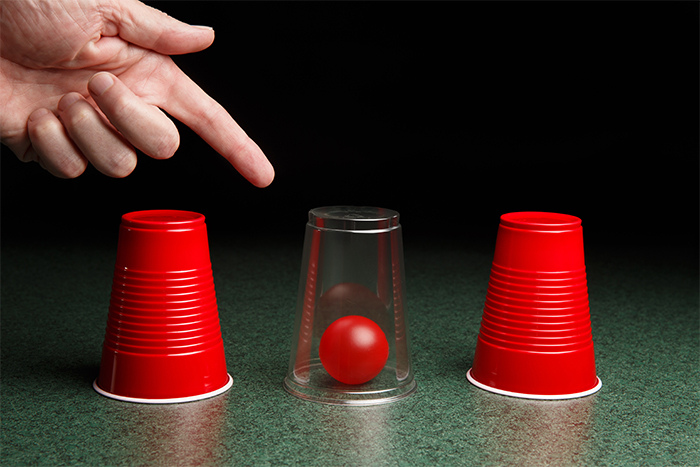
Ever since we started writing the Passionate Giving Blog we’ve received a lot of communication from folks who want to know how to start a major gift program. Most of these development professionals are working in small to medium sized non-profits and they just don’t have the resources to hire outside consultants to help them.
At Veritus Group we firmly believe that the greatest source of revenue growth for non-profits in the next decade is going to come through improved management and the execution of major gift strategies. So, we want to help you in any way we can to ensure your success.
Everyone is looking for more revenue to expand programs. And most of the time, that revenue is sitting right under your nose. It’s up to you to figure out how to find it.
Today, I’m going to share with you some information that will help you understand how to start your own program, no matter how large or small your organization. Follow these steps and you will be on your way to establishing a robust major gift program, which will lead to engaged donors and increased revenue for your mission.
Here is what you need to do:
- Make sure your leadership is committed to starting a major gift program — We have seen too many programs founder because the organizational leadership never bought into them and did not support the development person or team. Leaders must be on board to invest in and support your efforts. They have to be willing to nurture relationships and see the program as vital to your overall mission. And ultimately, they have to be willing to ask.
- Create a caseload pool from your current database — You’ll want to be able to go back four or five CALENDAR years to figure out who to choose for a caseload pool – the group of donors you will qualify for a caseload. In other words, go back to 2010 and find all the donors that gave $1,000+ cumulatively in any one of those years from then to the present. You may even have to go down to $500+cume, depending on the size of your database. The important thing is to start somewhere. Select from among those donors and sort them by recency and amount. In other words, place the highest and most recent givers at the top of your list. Next, select out at least 450 of the highest and most recent donors from that list. Now, there is one nuance here you need to pay attention to. You may have 450 donors just in the most recent calendar year, but at the bottom of that list you may have donors who have less capacity than the top of LAST year’s list. A $1000 cume donor who gave last year, but has not given this year, may be more valuable than a $500 cume donor this year. Just keep this point in mind.
- See if there are donors on your board — If you have a small number of donors, you will want to first look at your board as a source for major donors. They themselves may be your first major donors, along with their friends and connections. If you are really starting from ground zero, this could be your best source of potential major donors.
- Research and Qualify — With your “caseload pool” of donors you will want to start qualifying the donors to select for you caseload. Start reaching out to this “pool” by introducing yourself and asking the donor if she would like to have a more personal relationship with the organization. You’ll want to meet as many donors as you can, or speak to them on the phone, with the intention of finding out who they are and what motivated them to give to your organization. Through your research and qualification process you will start to establish a qualified caseload of major donors that you can cultivate, as well as begin to gain some knowledge of their passions and interests.
- Understand your programs and projects — You have to understand not only who your donors are, but you need to understand everything about your programs. How do you do what you do? What are all the different programs and projects that you carry out each day? What do those programs cost? What is the overhead for each of those projects? What do your program people need? What is the impact on the community because of these programs? Can it be measured? All of this is critical because major donors want to fund tangible, specific projects that will make an impact.
- Goal Setting and Creation of Strategy — Once you have qualified your “pool” and have a caseload of donors (no more than 150 per caseload), you will then want to begin creating revenue goals for each donor. This is important because it will give you something to attain and help you plan. Be reasonable, but don’t sandbag the goal either. Once you have a goal, you’ll need a strategy that outlines a whole year’s worth of communication, touchpoints and solicitations for each donor. In other words, you’ll be able to determine a plan, month by month, to reach your revenue goal
- Start Asking — You can have the best goals and strategy, but if you don’t actually start meeting with donors and asking for their help, you’ll never get off the ground. Remember, your donors want to give. Your job is to establish solid relationships with these donors and provide opportunities for them to invest in your organization.
- Thank, and thank again — Always be thanking your donors. Of course, thank them after they give a gift, but also during the course of the year to make them feel appreciated. You cannot thank enough.
- Tell your donors how their gift made a difference — Don’t miss this step. It’s critical if you ever want another gift. And, YOU DO! Be creative, but be diligent about this point. Donors want to know they made an impact. Tell them.
- Have someone hold you accountable — I don’t care if you have 10 donors or 150 donors on your caseload, you need to be held accountable for executing your plan. Over and over again, Richard and I have seen failure in major gift programs because no one is holding anyone accountable to carrying out the plan. If you are a one-person shop, get someone on your board to do this, or find a trusted friend who will make sure you are on top of things. This is critical for success, so don’t overlook it.
Well, there you have it. Again, whether you have 10 donors or hundreds of major gift donors, this is how you need to go about establishing your major gift program in order to become successful. The beauty of it is that you can start this now – today! There is nothing holding you back. Nothing. And over time, you will see the enormous benefits for your organization and for your donors. It will be so good!
Jeff
PS – If you want more detail on how your organization can start or re-start your major gift program, click here to request our free White Paper, “Starting a Successful Major Gift Program.”
This was originally posted in 2014.






Excellent resource!